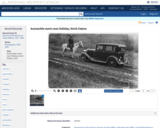
In this 1949 photo from the National Archives an automobile is shown with a man on horseback.
- Subject:
- History/Social Sciences
- Material Type:
- Primary Source
- Provider:
- National Archives and Records Administration
- Date Added:
- 07/06/2022

In this 1949 photo from the National Archives an automobile is shown with a man on horseback.

This lesson focuses on sorting and classifying recreational activities into categories. Students participate in a sorting activity where they categorize recreational activities based on their attributes and the landforms where they would typically take place. They work independently or in pairs, either through Google Slides or printed copies, to complete this sorting task.
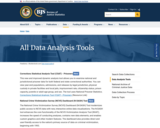
Bureau of Justice Statistics offers dynamic data analysis tools allows you to generate tables and graphs of arrest, recidivism, federal case processing among other data.
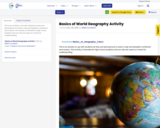
This is an activity to use with students as they are learning how to read a map and decipher continents and oceans. This activity is intended for high school students and can also be used as a check for understanding.
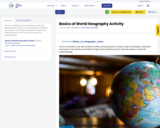
This is an activity to use with students as they are learning how to read a map and decipher continents and oceans. This activity is intended for high school students and can also be used as a check for understanding.
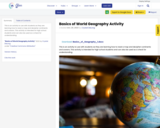
This is an activity to use with students as they are learning how to read a map and decipher continents and oceans. This activity is intended for high school students and can also be used as a check for understanding.
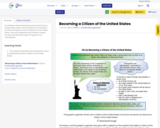
The students will describe the process of becoming a United States citizen and the reason for the writing of the 14th Amendment to the Constitution of the United States. They will understand how American society has become diverse through immigration and naturalization.
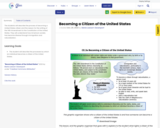
The students will describe the process of becoming a United States citizen and the reason for the writing of the 14th Amendment to the Constitution of the United States. They will understand how American society has become diverse through immigration and naturalization.

Third-grade students will use Bee-Bots to learn about budgeting and economic choices in this two-day activity. On Day 1, students will review their Bee-Bot coding skills and navigate an obstacle course while identifying the activity's input, processor, and output components. On Day 2, students will work in groups to program their Bee-Bots to collect objects with different values while staying within a budget of $10. Students will learn about economic choices, opportunity costs, and computing system components. At the end of the lesson, students will reflect on their choices and challenges and use recording sheets to track their progress. This lesson plan helps students learn essential skills such as opportunity costs, computing systems, problem-solving, critical thinking, and coding in a fun and engaging way.
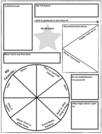
Learn all about your students with this About Me Handout! Teachers can give to students on the first day/week of school. Great for starting conversations, get to know you activities, or just to know about eah student.

Teachers will utilize this document by having students to complete the form when they do not follow classroom guidelines.

At the beginning of the lesson, students will have the opportunity for physical movement during the activator while reviewing the meaning of being a good citizen. Students will engage in collaborative conversations at multiple times to explore and analyze ways they should and should not use technology while at school. These collaborative conversations will allow students to have a stronger understanding of how they should use technology to support their learning before they share what they think is the most important way to be a good citizen while using technology through an independent activity of drawing and labeling.
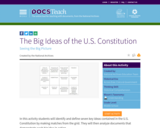
In this activity students will identify and define seven key ideas contained in the U.S. Constitution by making matches from the grid. They will then analyze documents that demonstrate each big idea in action.
This activity is designed to prepare students for the Constitution-in-Action Learning Lab at the National Archives in Washington, DC. It is a part of a package of pre-visit activities associated with the lab experience.
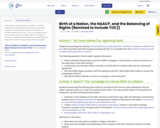
In this lesson students learn how Birth of a Nation reflected and influenced racial attitudes, and they analyze and evaluate the efforts of the NAACP to prohibit showing of the film.
This is a remixed version to include the lesson activities within the Table of Contents.
Original: https://edsitement.neh.gov/lesson-plans/birth-nation-naacp-and-balancing-rights
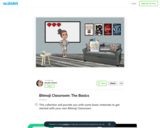
Jennifer Daniel of Washington County has created a Wakelet to show how to create a Bitmoji Classroom if you'd like to create one of this graphic-based virtual classroom interfaces.

Jackson Ward in Richmond, VA was one of the most active and well known centers of African American life in this country by 1920. Other examples of cities such as this one include Alexandria, VA and Church Street in Norfolk, VA. African Americans were able to create vibrant communities with businesses, churches, and entertainment venues despite the challenges they faced in this country.
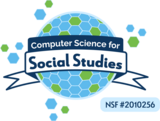
There were many black women who worked as code breakers at Arlington Hall during World War II, including Elsie Scott, Sue Bailey Thurman, and Genevieve Collins. These women faced significant challenges and discrimination due to their race and gender, but they made significant contributions to the war effort through their work as code breakers.
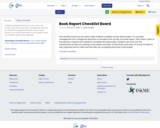
A digital checklist board that you can use in any content area! This is a project management resource. The directions are geared towards a book report, however, you could adjust them for any project where the students need to stay organized
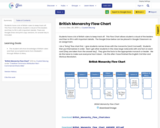
Students have a lot of British rulers to keep track off. This Flow Chart allows student a visual of the leaders and then to fill in with important details. There are Google Draw and print copy versions. An answer key is included.

Over a billion people worldwide live on less than $1.25 a day. But that number is falling. This has given credence to the idea that extreme poverty can be eliminated in a generation. A new study by Brookings researchers examines the prospects for ending extreme poverty by 2030 and the factors that will determine progress toward this goal. The interactive tool below allows users to explore the study’s key findings.